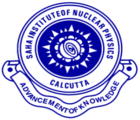Speaker
Description
The observational evidences like the rotational velocity of stars, gravitational lensing etc point to the existence of huge non-luminous matter which is known as Dark Matter (DM). One of the favoured candidates of DM is Weakly Interacting Massive Particles (WIMPs). The WIMPs can be directly detected by measuring the recoil nuclei from the WIMPs-nuclear elastic scattering in the detector material. Superheated liquid detector (SLD) with C2H2F4 (b.p. = -26.3 oC) liquid has the potential to detect the low mass WIMPs. It is already theoretically established that the C2H2F4 SLD has the potential to probe WIMPs-nucleon spin-independent cross section with a projected sensitivity levels (at 90% C.L.) better than 4.6 × 10^-41 cm^2 at WIMP masses down to ∼4 GeV with a total exposure of ∼1000 kg.day for a zero background consideration. The major advantage of SLD is that few backgrounds can be rejected by adjusting the operating temperature and pressure of the detector. Underground laboratories also help us to shield the experiment from backgrounds like cosmic interference. The initial run of the experiment has been started at the Jaduguda Underground Science Laboratory (JUSL), UCIL, Jharkhand, India, at 555m deep underground from the surface. The measurement was stated at JUSL with an exposure of 1.3 kg.days at the ambient temperature having the threshold of about 7 keV. The R & D has begun to increase in several steps the sensitivity of the detector to reach the theoretically predicted region by increasing the mass and exposure of the detector. The background measurements at JUSL have almost been completed and the further measurements specially on the neutron spectrum and radon level are going on.
